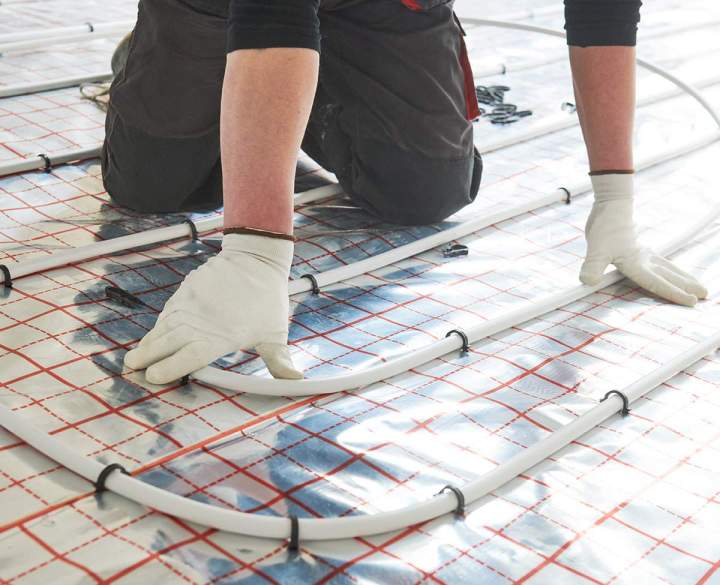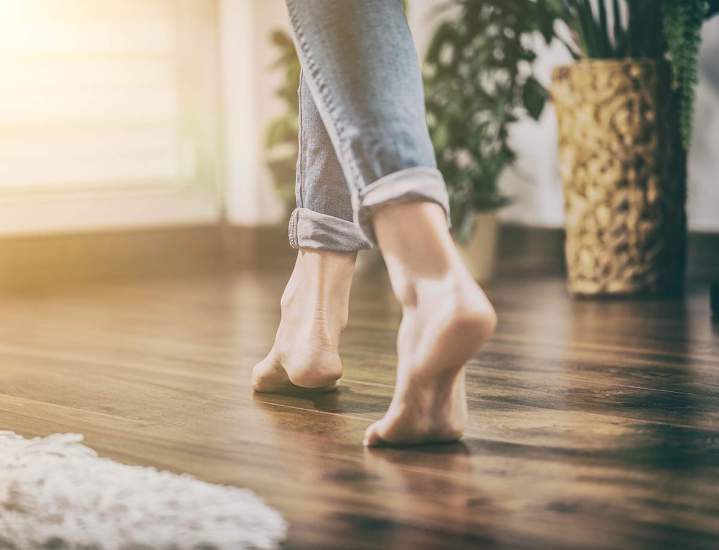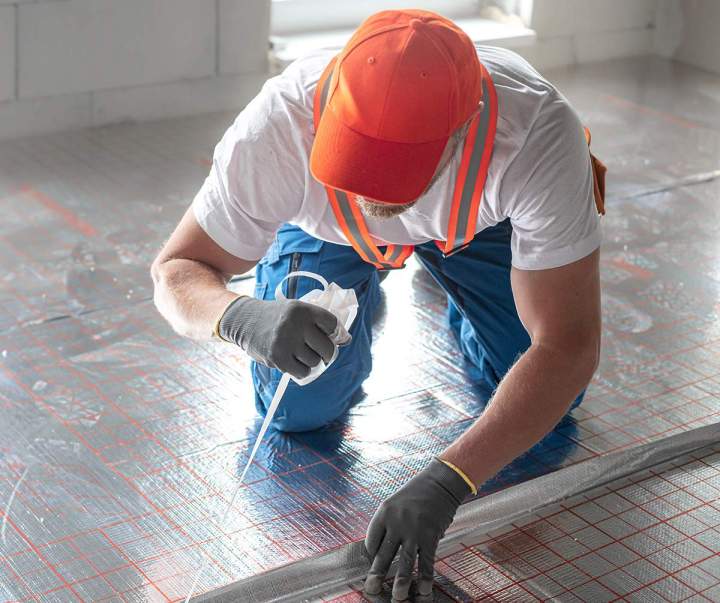FAQ, Flooring Specialist – Montreal
Technical Questions
How does a hot water radiant floor work?
What is the difference between a hot water radiant floor and an electric floor?
What is the temperature of the water flowing through the pipes?
The temperature generally varies between 30°C and 45°C, depending on the type of floor and the energy source.
Can the temperature be regulated room by room?
Yes, each room can be equipped with an independent thermostat for precise control.
Is it compatible with all energy sources (gas, oil, heat pump, etc.)?
Does the system work well with a low-temperature heat pump?
What type of pipe is used? (PEX, PEX-AL-PEX, or multilayer?)
Can radiant flooring be installed on an existing slab?
Yes, it is possible with a raised floor, with a layer of insulation and a thin screed or a dry system.
What thickness of screed should be used?
You should generally allow between 5 and 7 cm, depending on the type of floor and the technique used.
Does it work well with floating floors, wood, ceramic, or vinyl?
What type of insulation should be used underneath the system?
Is regular maintenance necessary?

Financial Matters
How much does a hot water radiant floor system cost (materials + installation)?
Is it more expensive than other heating systems?
Is it profitable in the long term?
What is the annual maintenance cost?
Are subsidies or tax credits available?
How much will I save on my heating bill?
How long does it take to recoup the investment?

Questions About Installation
Can radiant flooring be installed in an existing home or only in new construction?
Radiant flooring can be installed in both cases. When renovating, Microclimat often favors raising the floor with a thin screed or a dry system to limit the amount of work required.
How long does installation take?
Do we have to leave the house during the work?
Should the existing floor be broken up?
Will there be significant dust or inconvenience?
Who should perform the installation? (plumber, heating engineer, general contractor)
Can I do some of the work myself? (self-build)

Performance and comfort issues
Does it heat well? Even in winter?
How long does it take to heat a room?
Is the heat evenly distributed?
Is it comfortable to wear barefoot?
Is there a risk of overheating?
Can the system be left running 24/7?
Does radiant flooring dry out the air too much?

Questions about maintenance and risks
What happens in the event of a water leak?
How long does a radiant floor system last?
Is it easy to detect a leak?
Should the system be purged?
Is there a risk of blockages or corrosion?
Can holes be made in the floor afterwards? (to hang furniture, fix a wall, etc.)
What are the signs that the system is not working properly?

Questions about energy efficiency
Is it effective in cold regions?
Does it work well with a geothermal heat pump?
Can radiant flooring be combined with other types of heating (wood stoves, radiators, etc.)?
Yes, radiant flooring can be integrated with other heating sources to provide a hybrid solution tailored to specific needs.
Can the system be connected to a smart thermostat?
Can radiant flooring be used to heat large spaces (e.g., cathedral ceilings)?

Design/Project Questions
Should radiant flooring be planned for when designing the house?
When is the best time to install it in a renovation project?
Is it possible to heat only one floor or part of the house?
Yes, the system allows you to heat only certain areas or floors thanks to independent circuits and room-by-room control.
What is the lifespan of the system?
Are permits or inspections required for installation?
